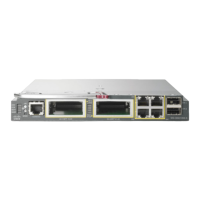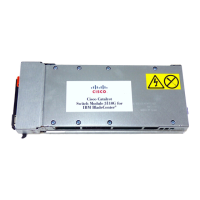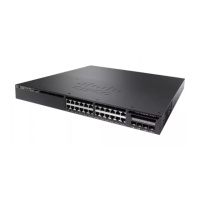Contents
xvi
Cisco Catalyst Blade Switch 3120 for HP Software Configuration Guide
OL-12247-01
Forwarding State 17-7
Disabled State 17-7
How a Switch or Port Becomes the Root Switch or Root Port 17-8
Spanning Tree and Redundant Connectivity 17-8
Spanning-Tree Address Management 17-9
Accelerated Aging to Retain Connectivity 17-9
Spanning-Tree Modes and Protocols 17-10
Supported Spanning-Tree Instances 17-10
Spanning-Tree Interoperability and Backward Compatibility 17-11
STP and IEEE 802.1Q Trunks 17-11
VLAN-Bridge Spanning Tree 17-11
Spanning Tree and Switch Stacks 17-12
Configuring Spanning-Tree Features 17-12
Default Spanning-Tree Configuration 17-13
Spanning-Tree Configuration Guidelines 17-13
Changing the Spanning-Tree Mode. 17-15
Disabling Spanning Tree 17-16
Configuring the Root Switch 17-16
Configuring a Secondary Root Switch 17-18
Configuring Port Priority 17-18
Configuring Path Cost 17-20
Configuring the Switch Priority of a VLAN 17-21
Configuring Spanning-Tree Timers 17-22
Configuring the Hello Time 17-22
Configuring the Forwarding-Delay Time for a VLAN 17-23
Configuring the Maximum-Aging Time for a VLAN 17-23
Configuring the Transmit Hold-Count 17-24
Displaying the Spanning-Tree Status 17-24
CHAPTER
18 Configuring MSTP 18-1
Understanding MSTP 18-2
Multiple Spanning-Tree Regions 18-2
IST, CIST, and CST 18-3
Operations Within an MST Region 18-3
Operations Between MST Regions 18-4
IEEE 802.1s Terminology 18-5
Hop Count 18-5
Boundary Ports 18-6

